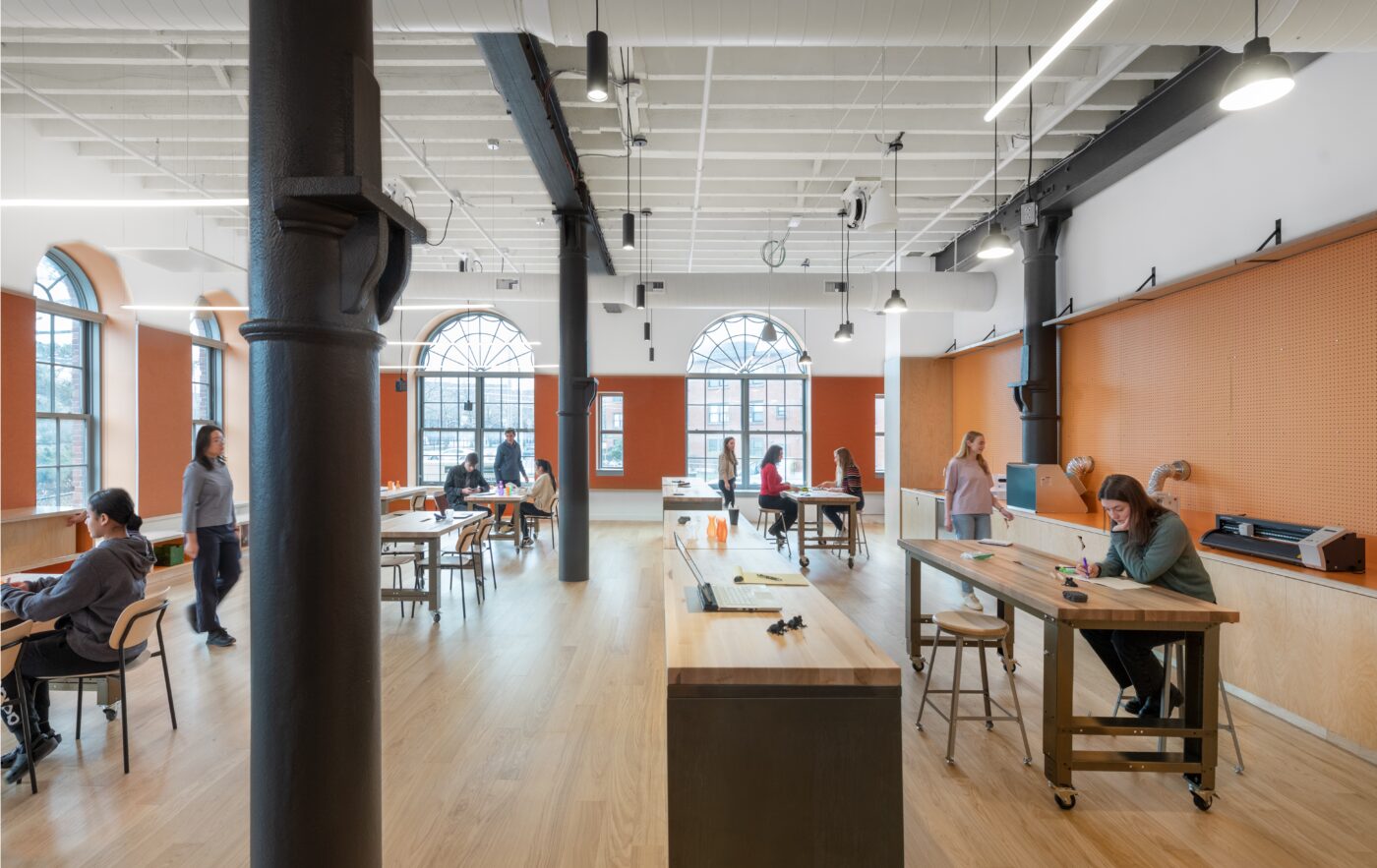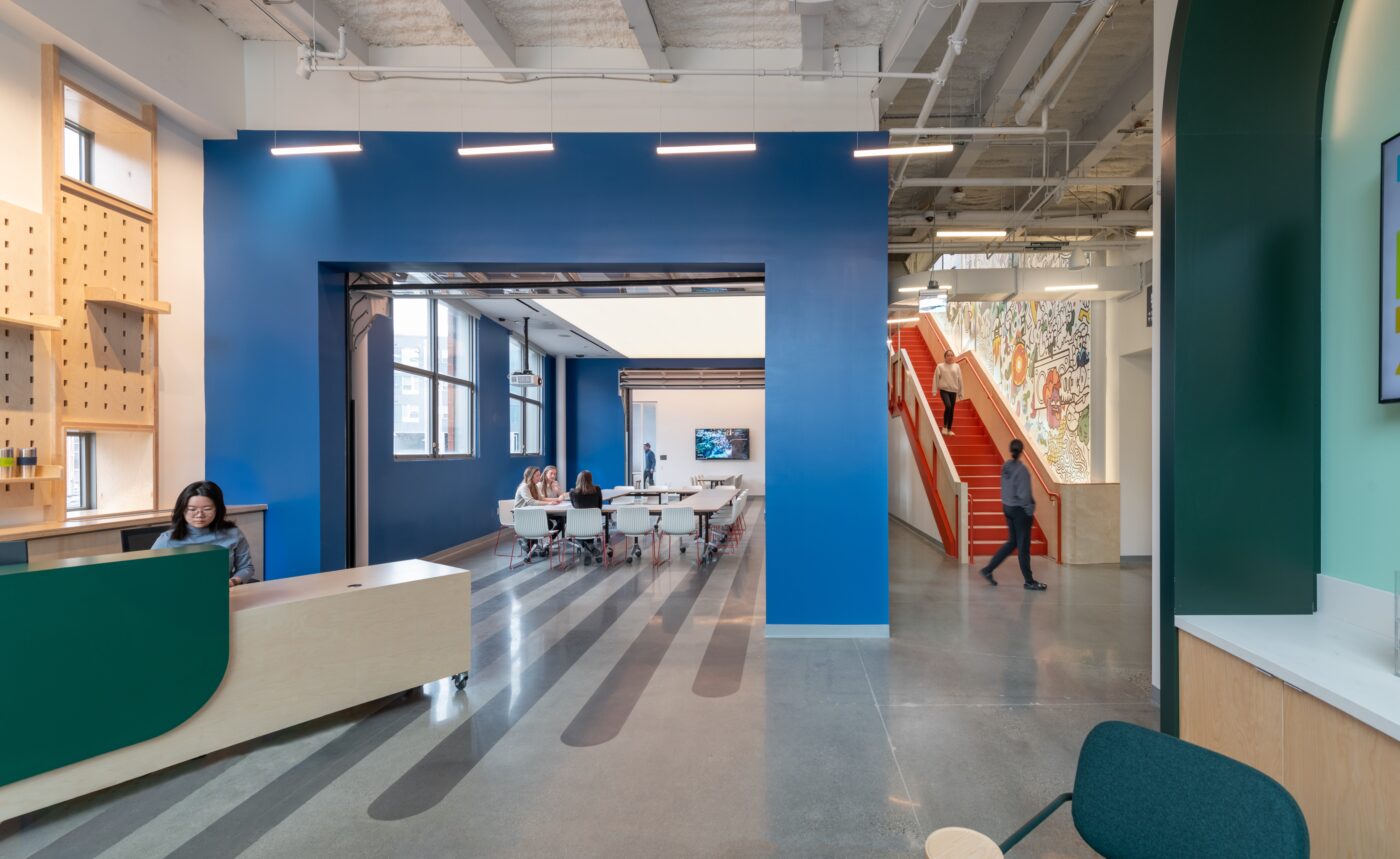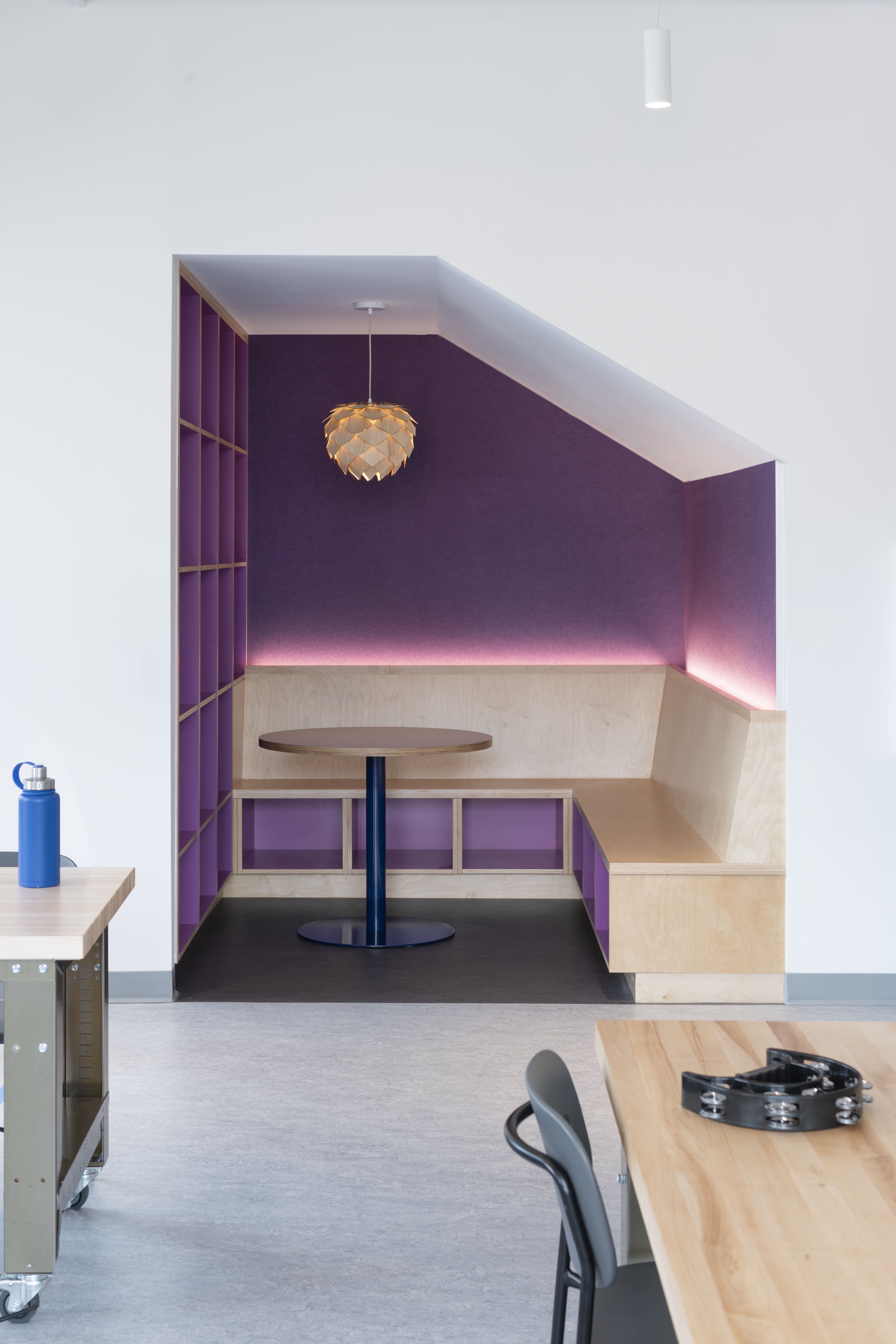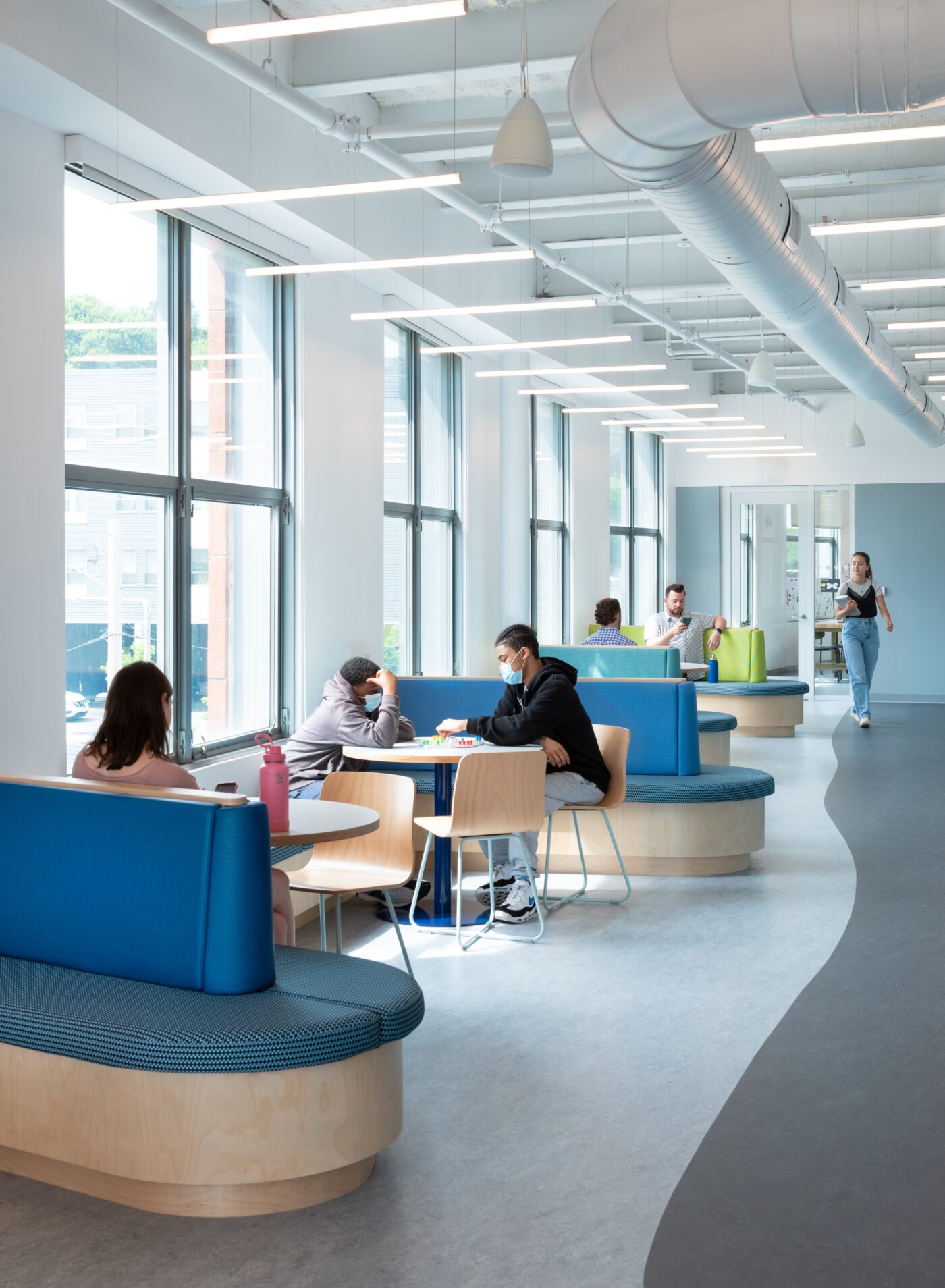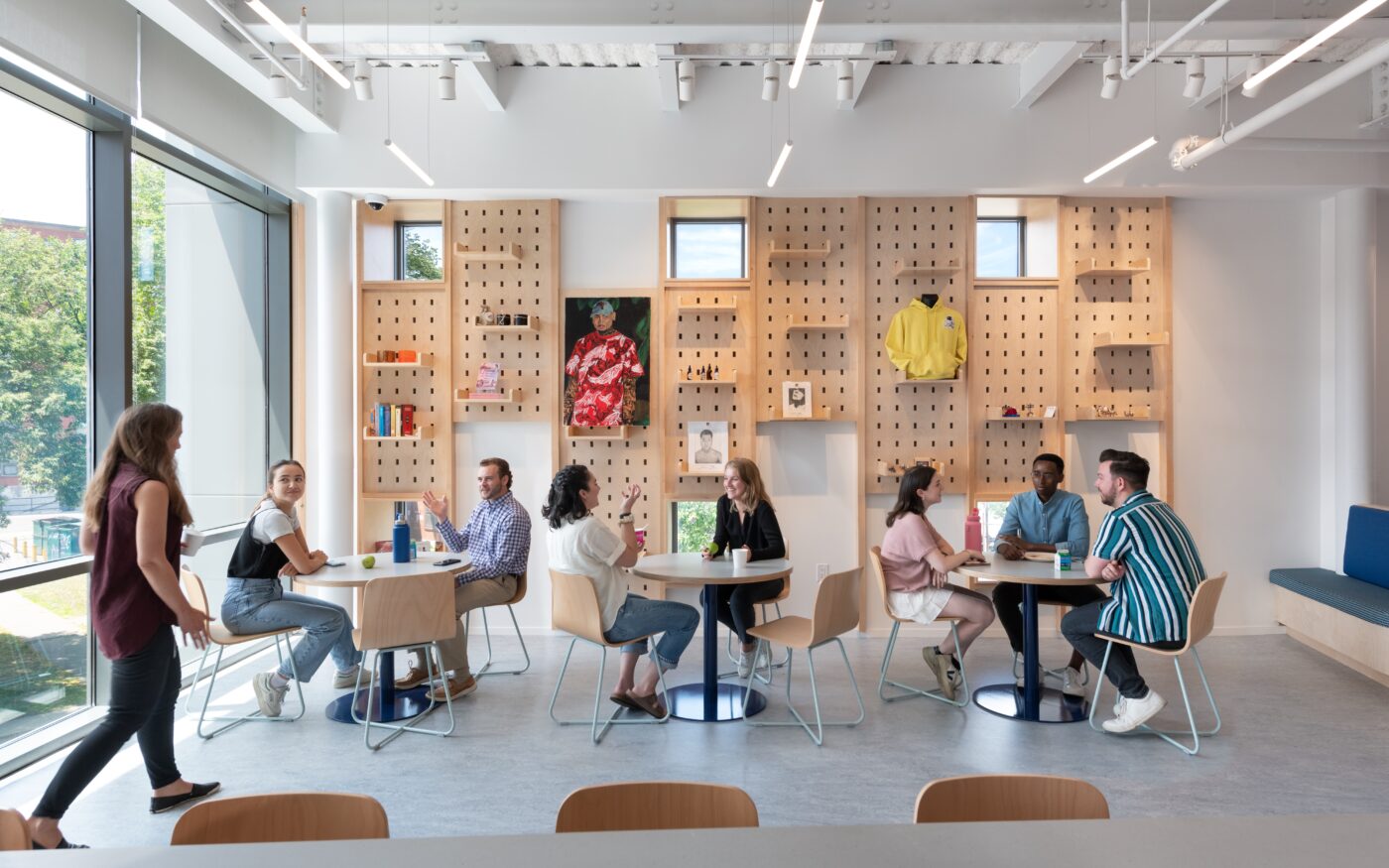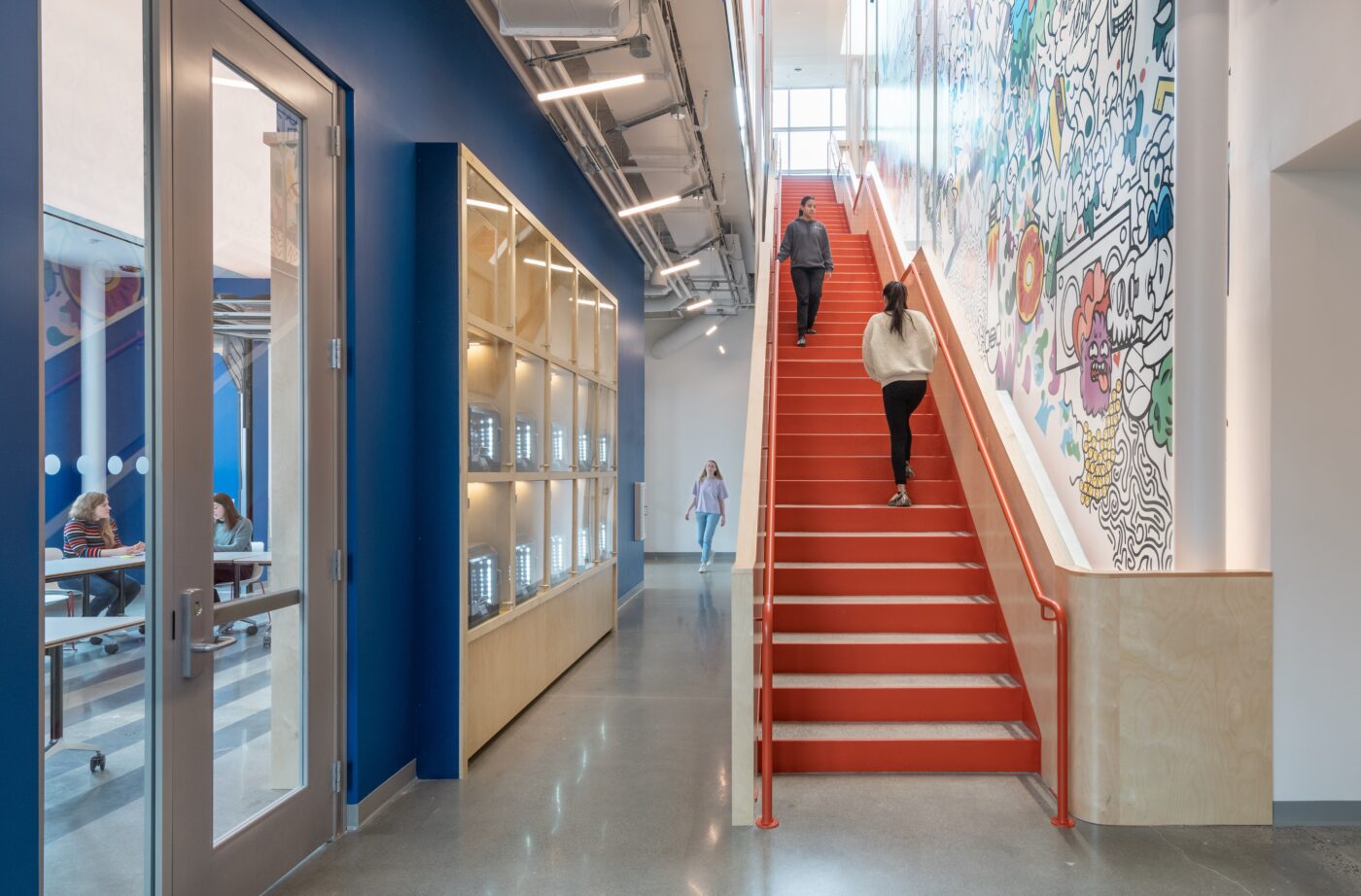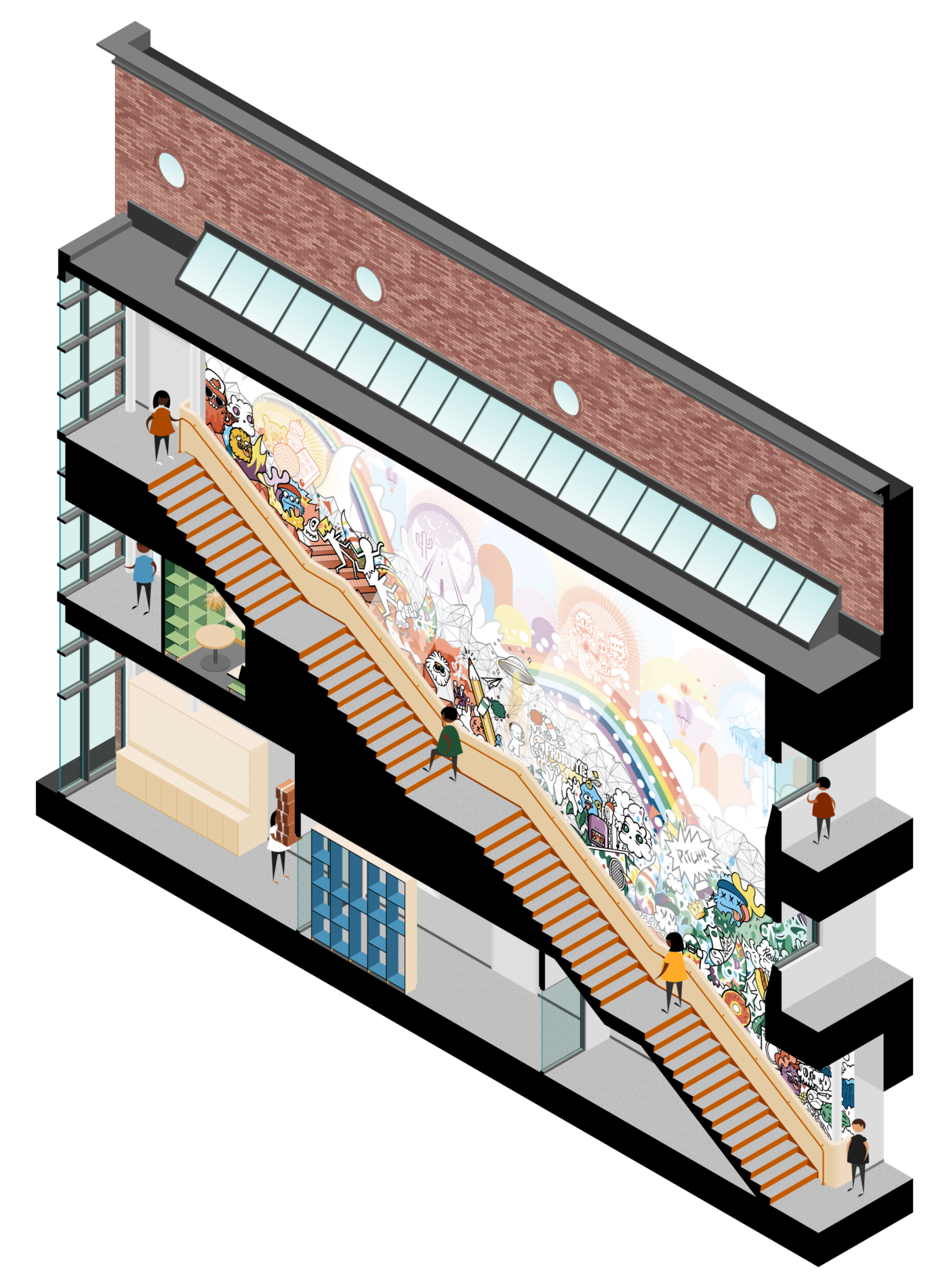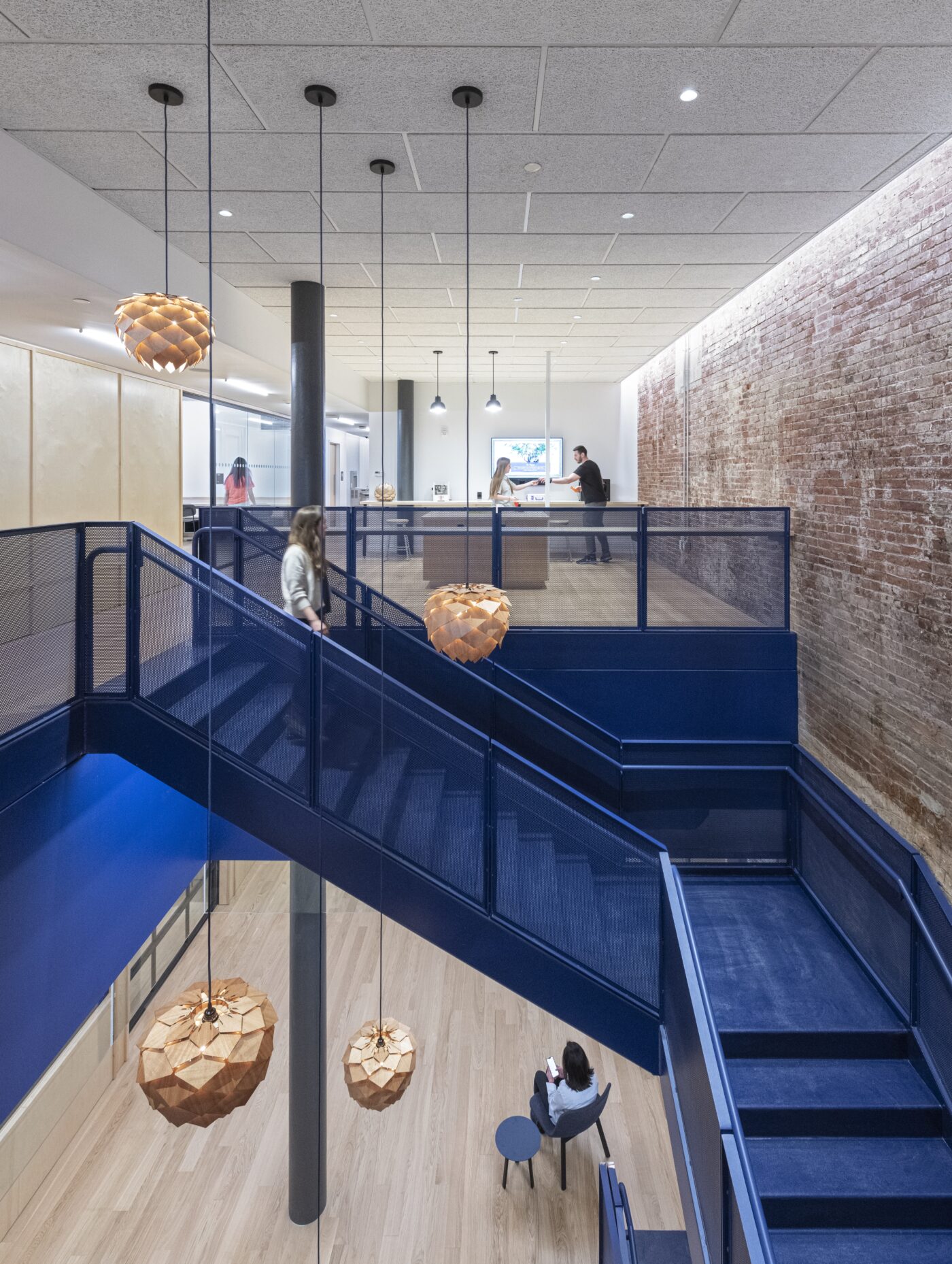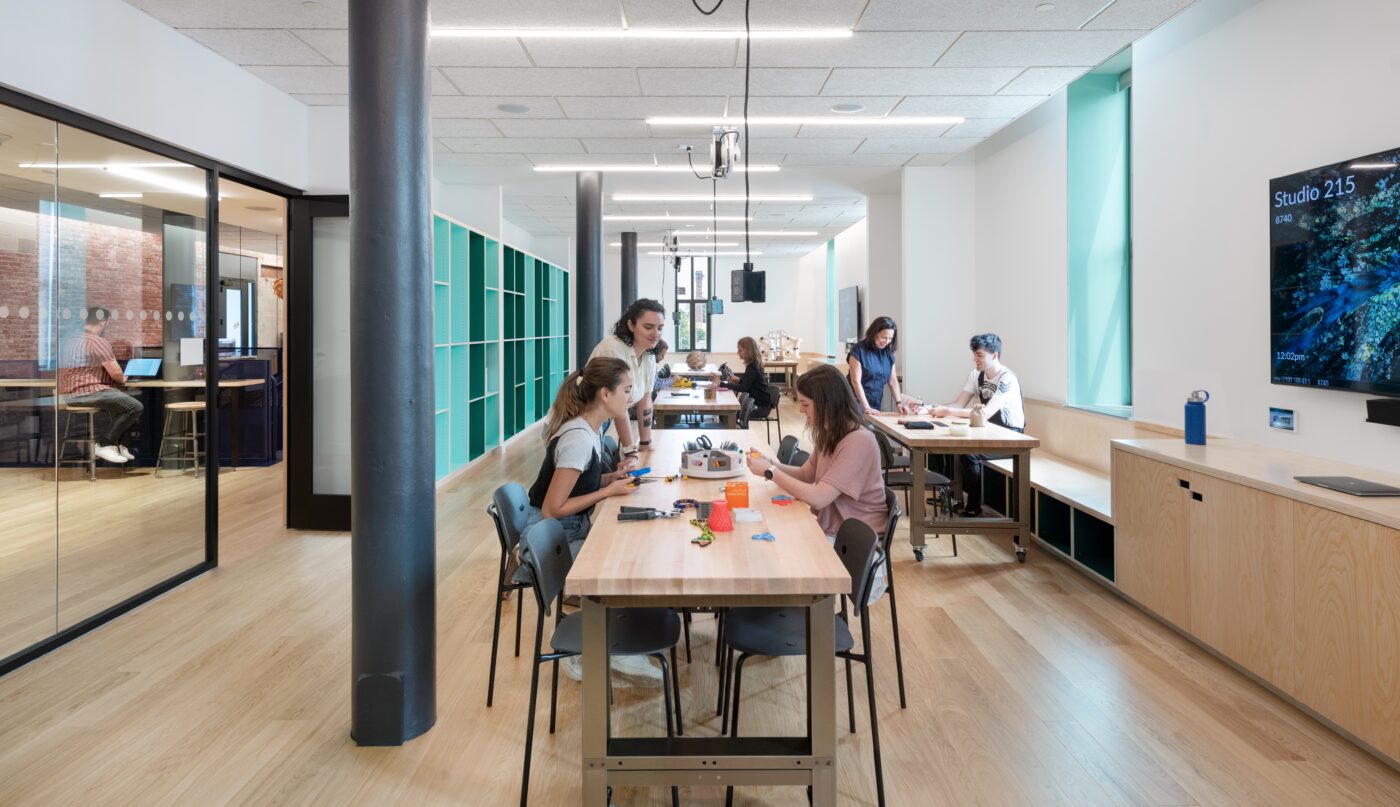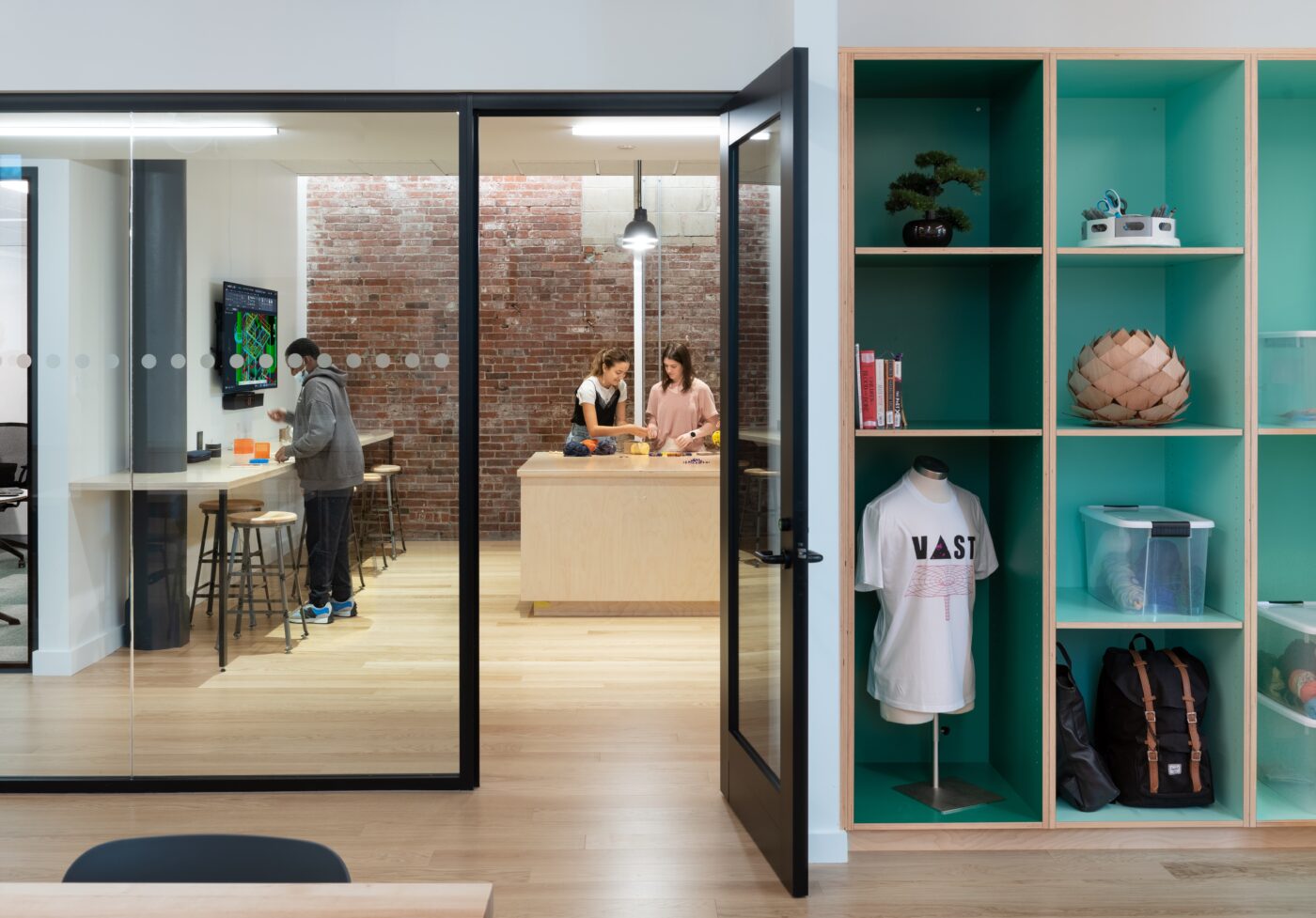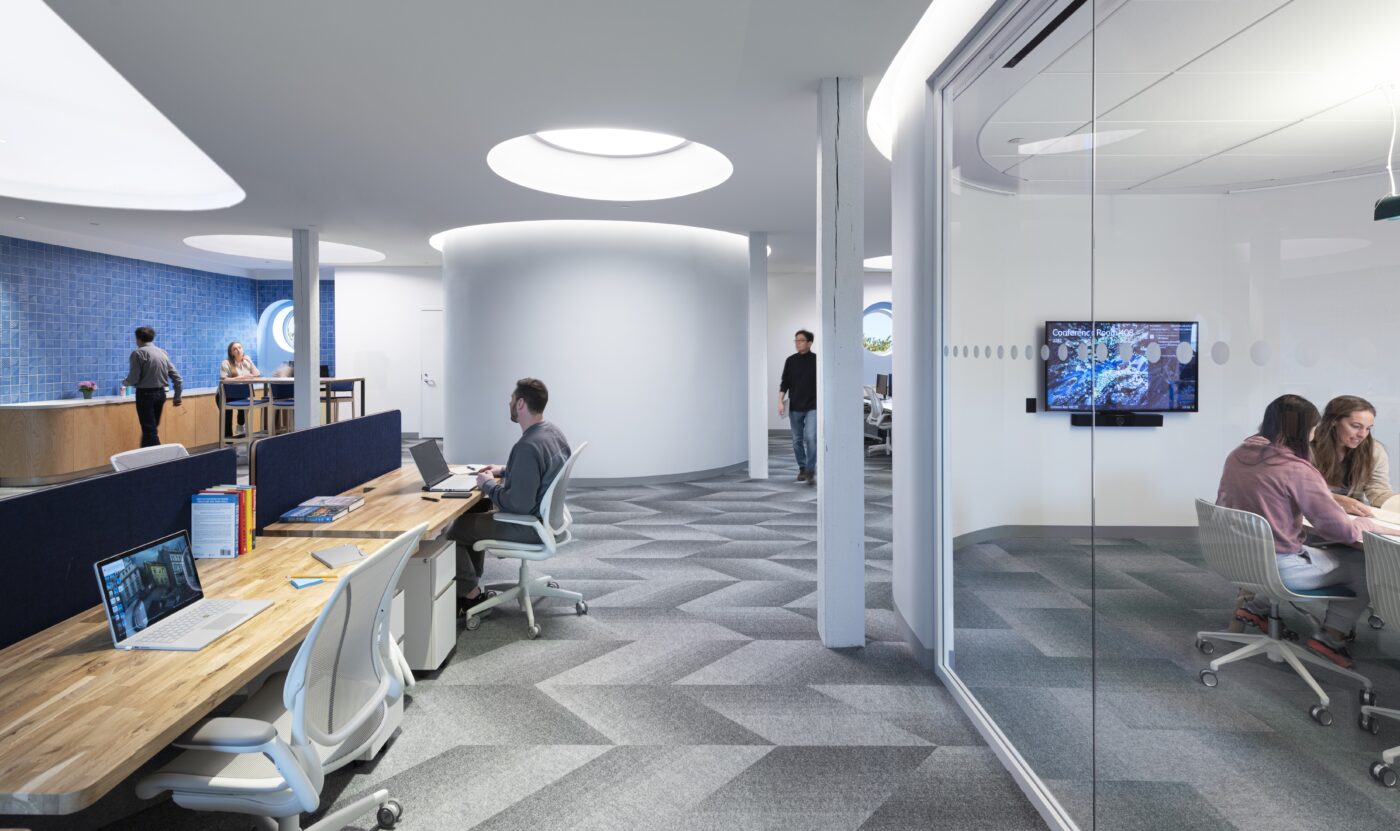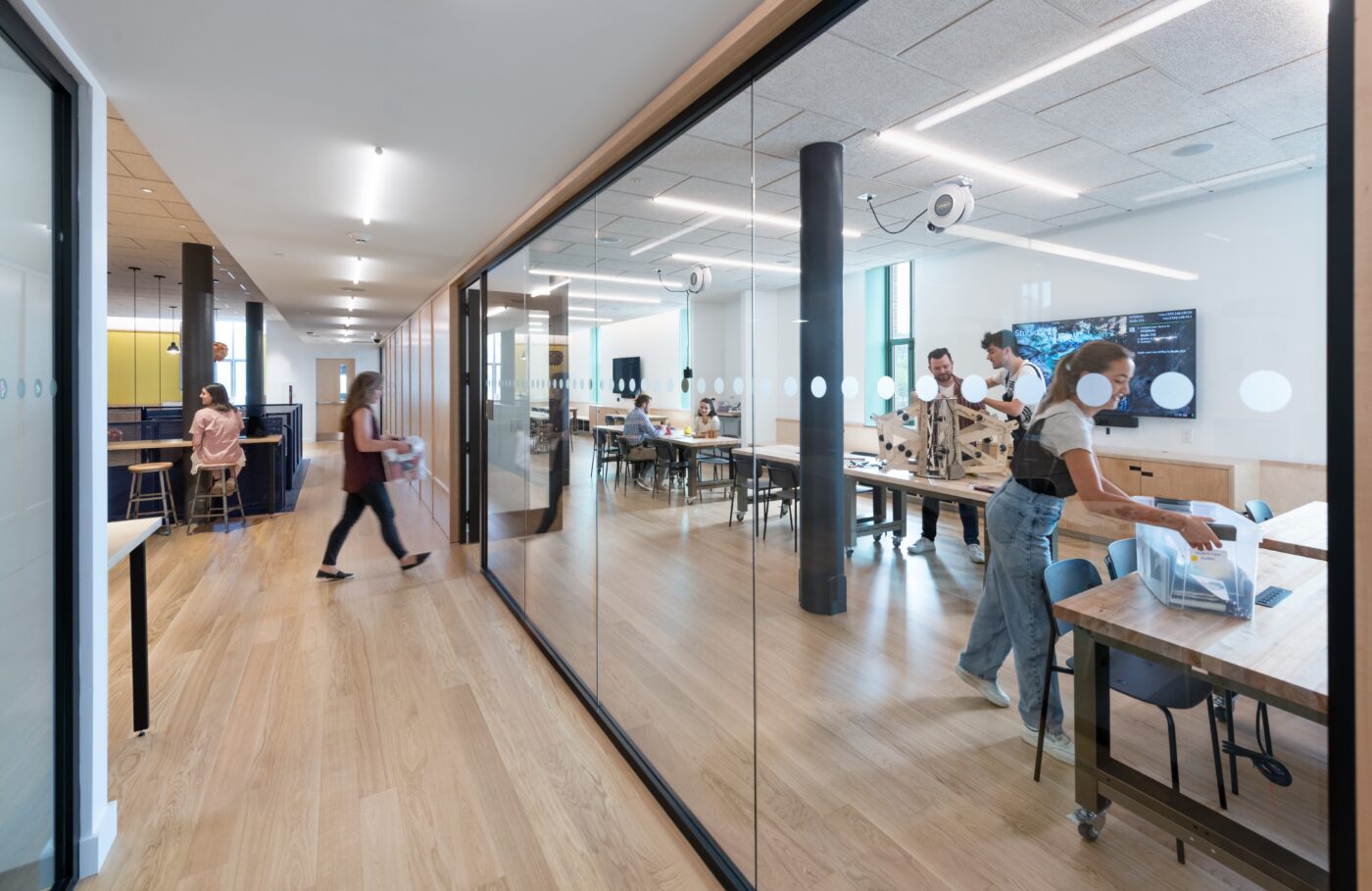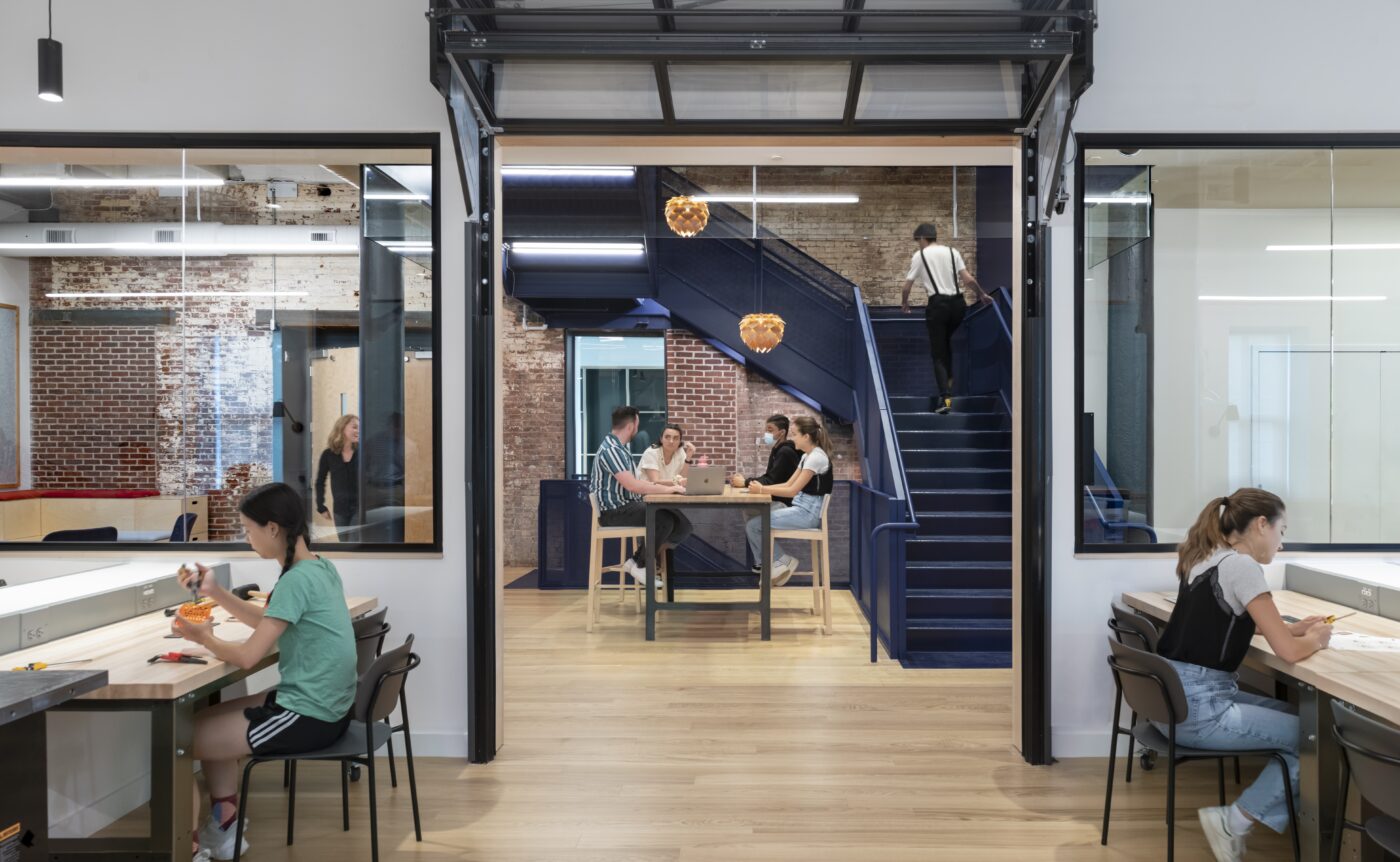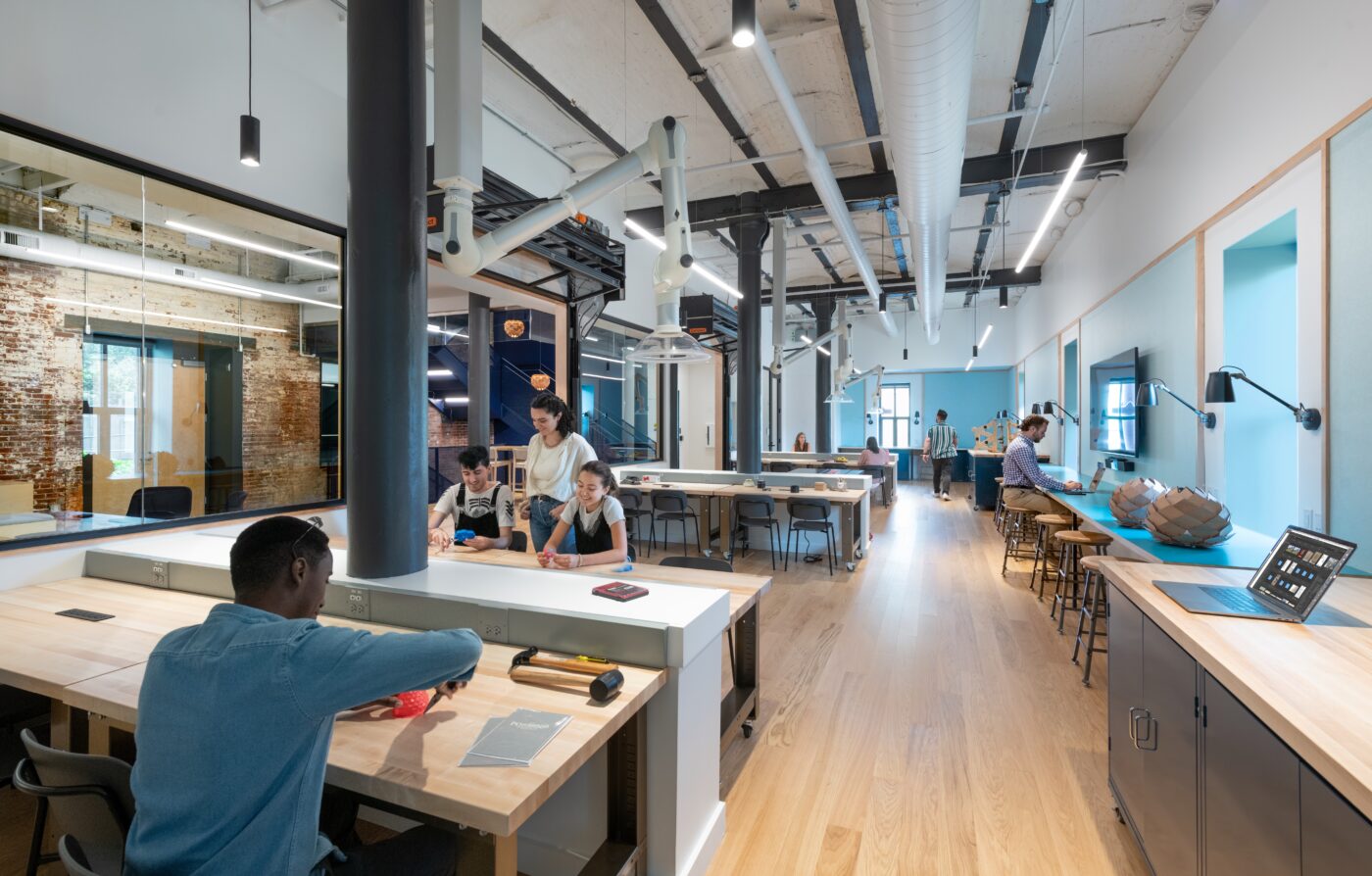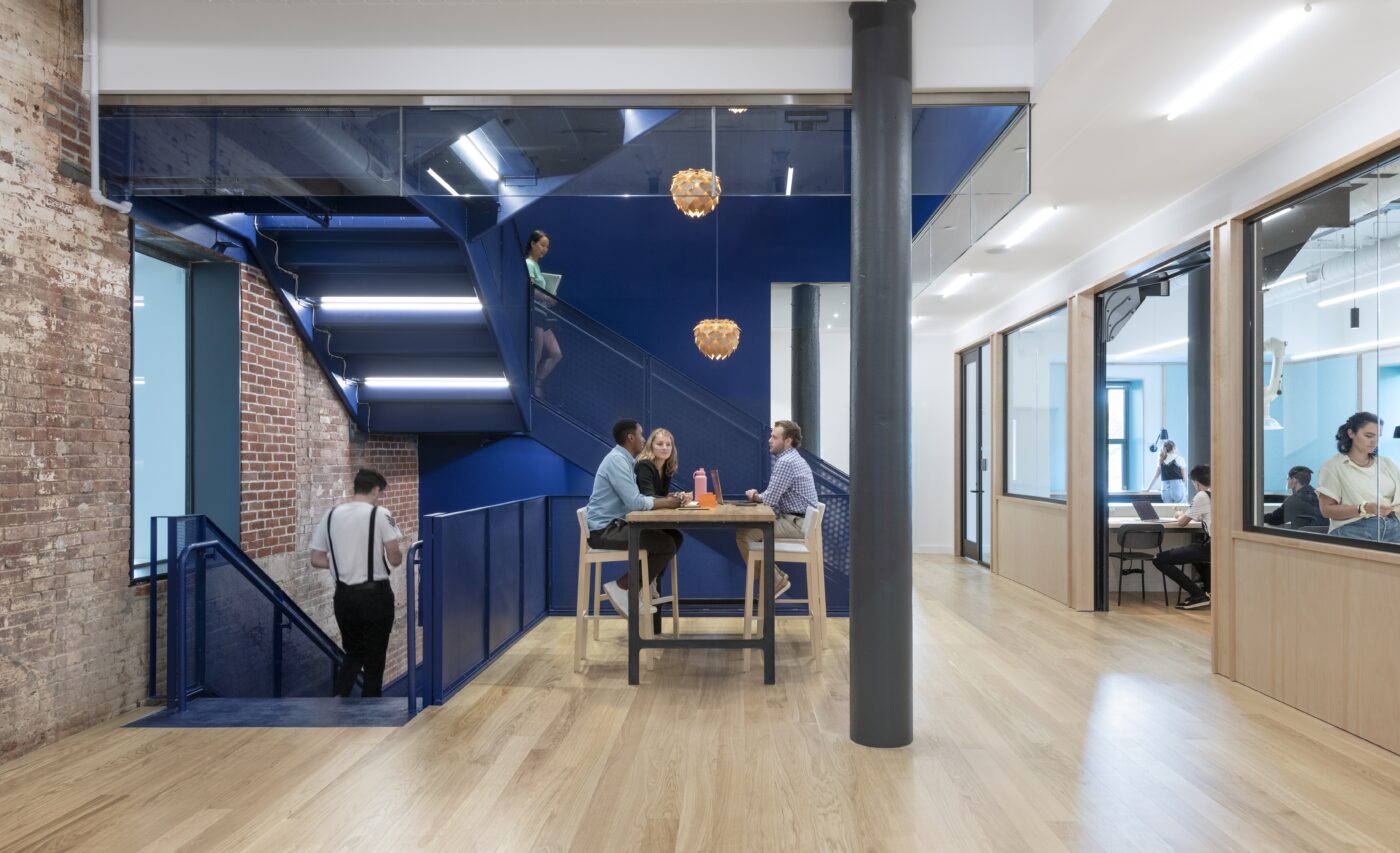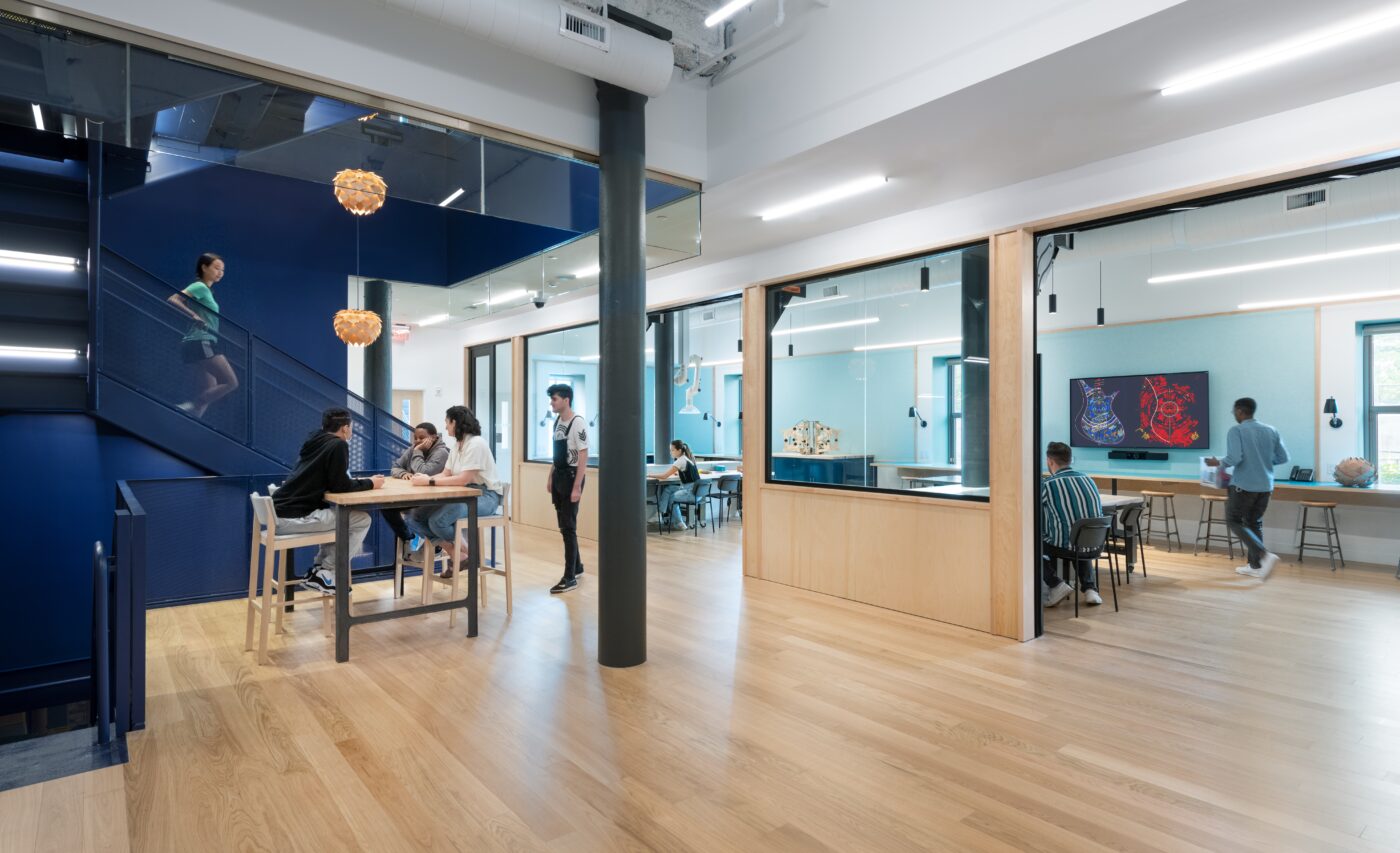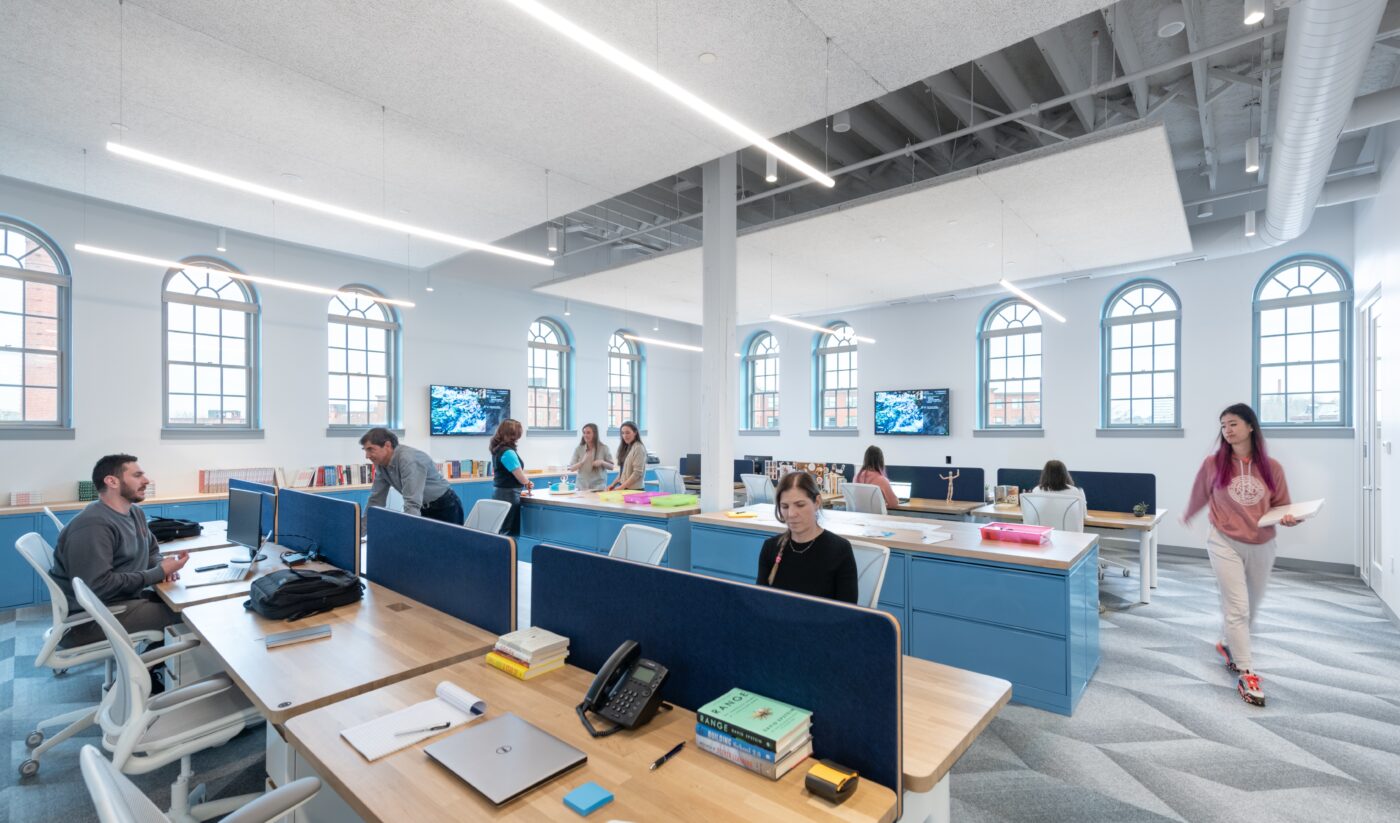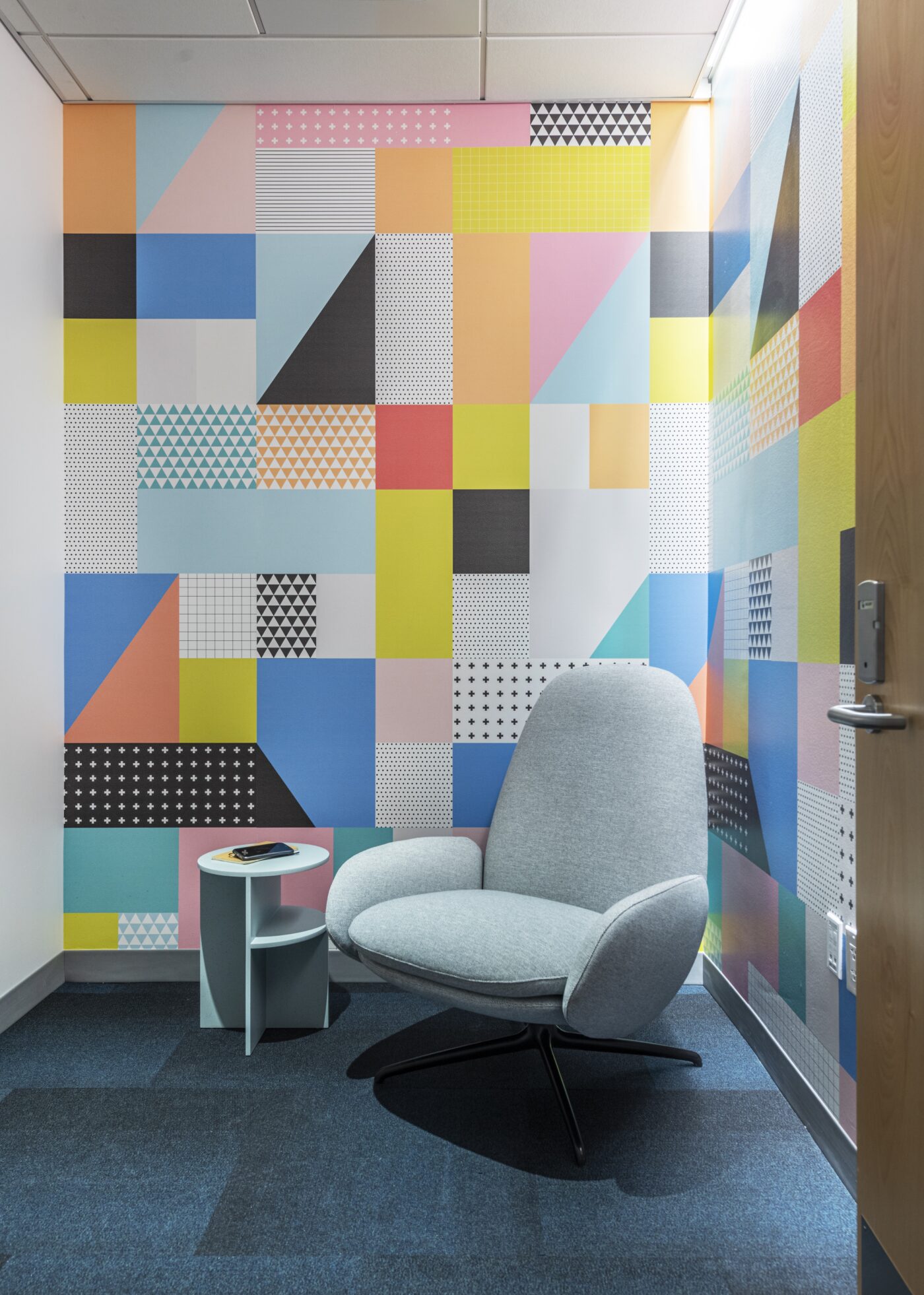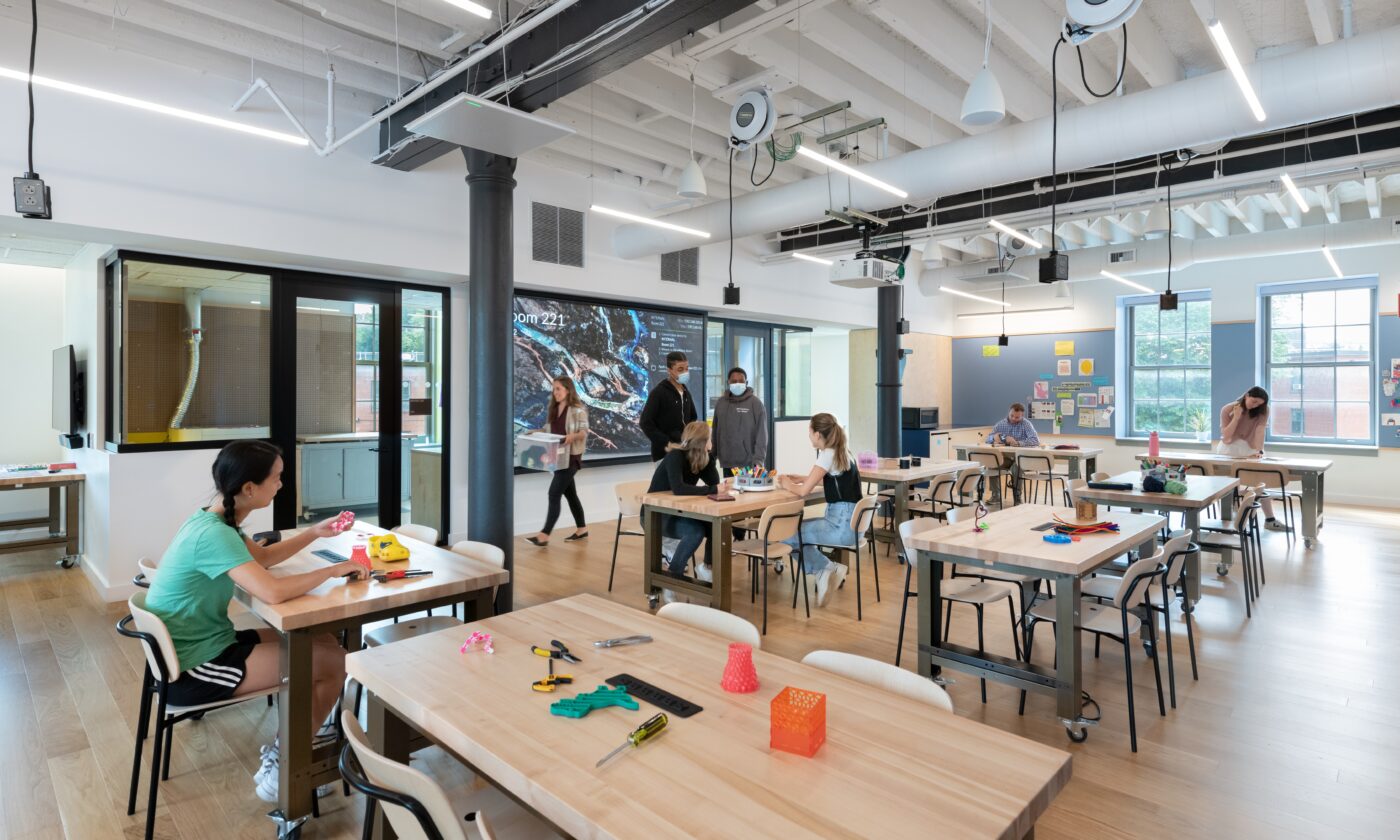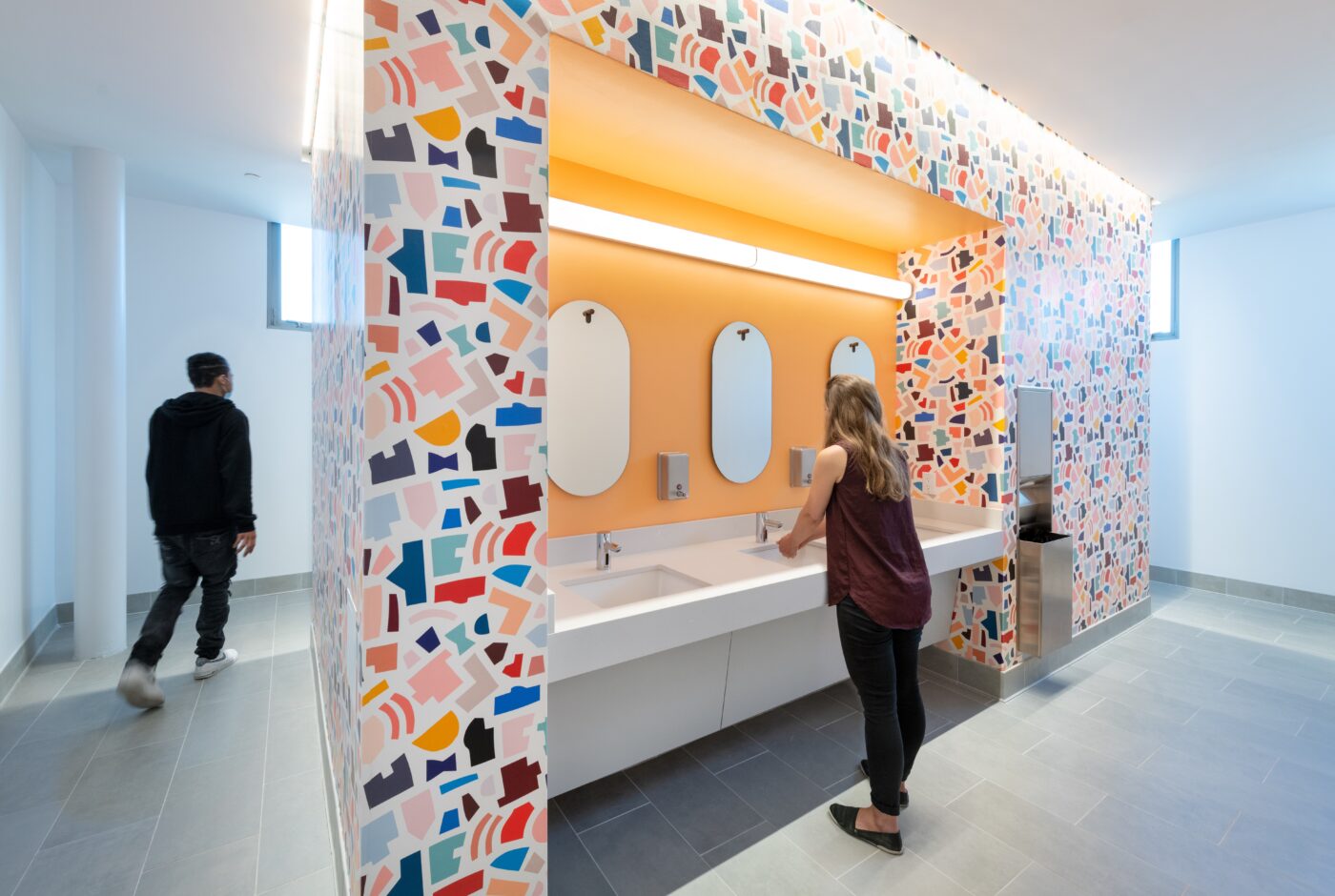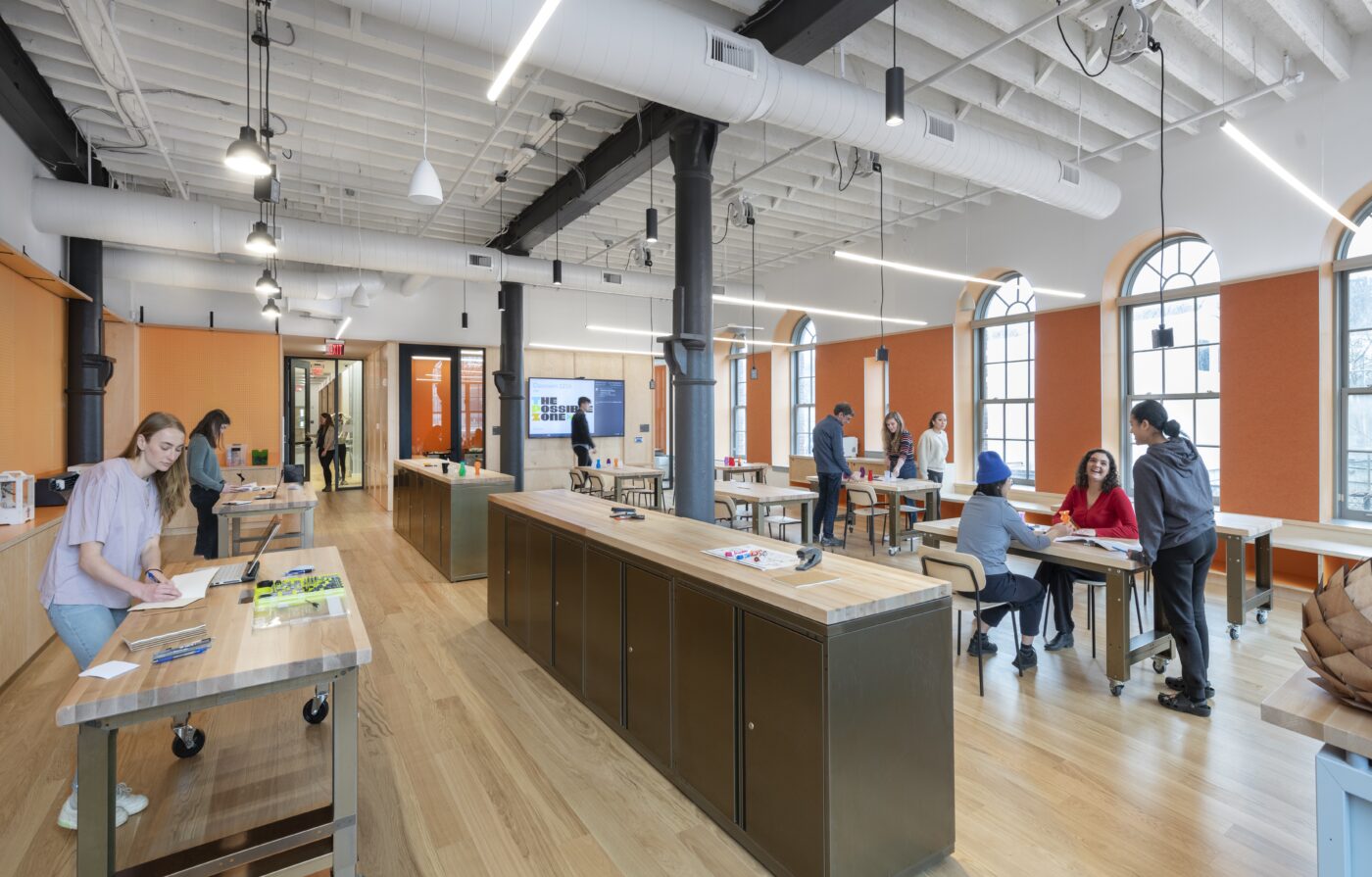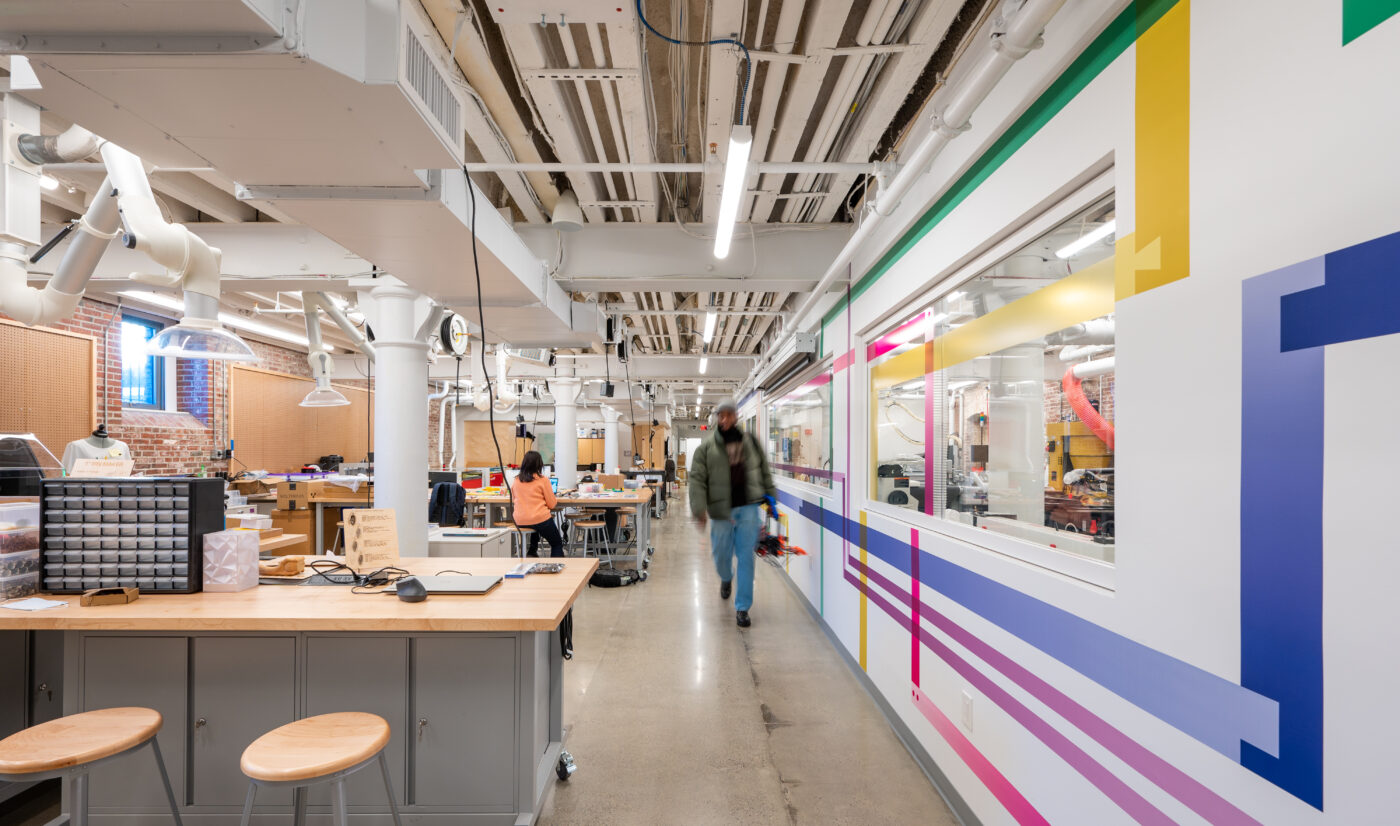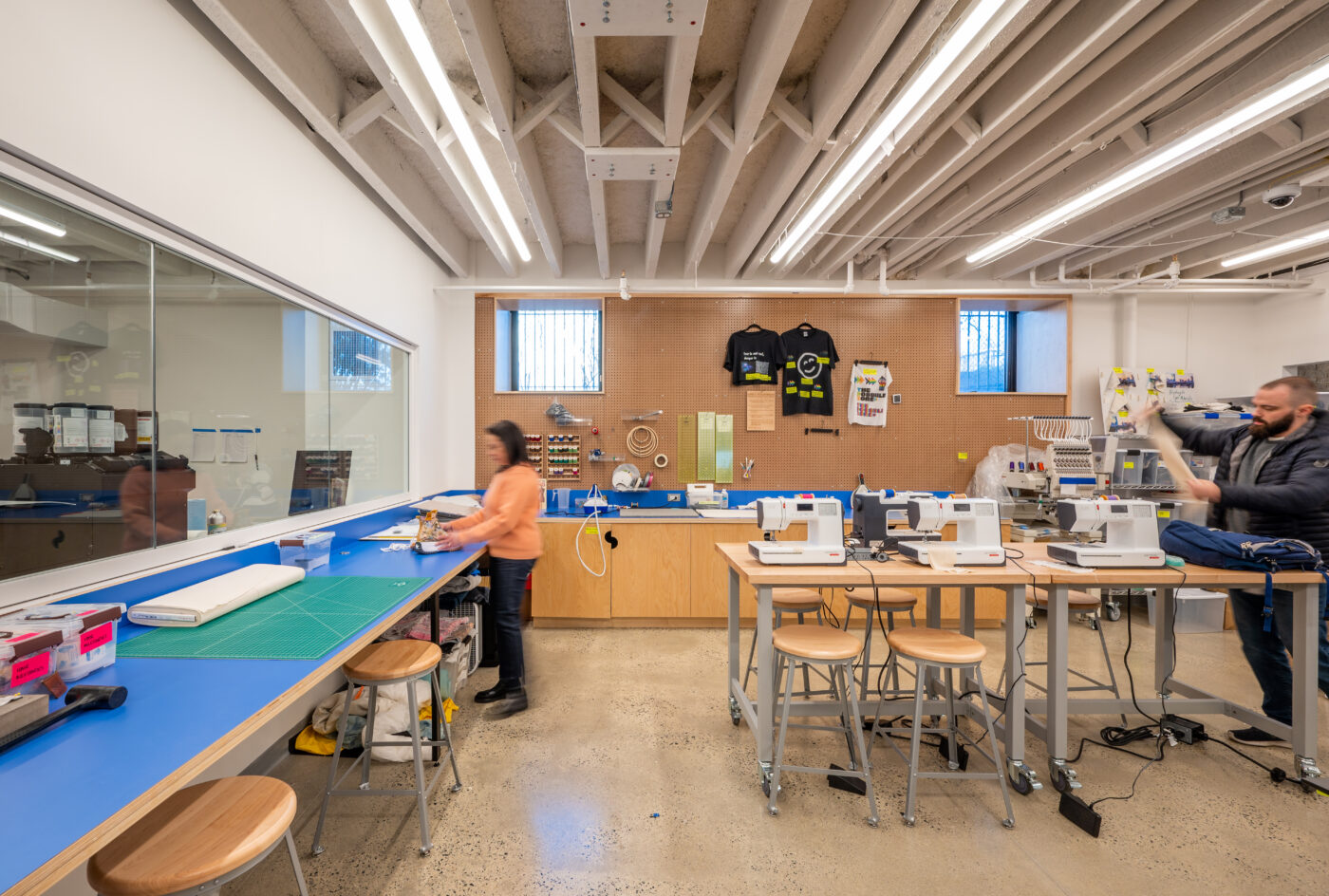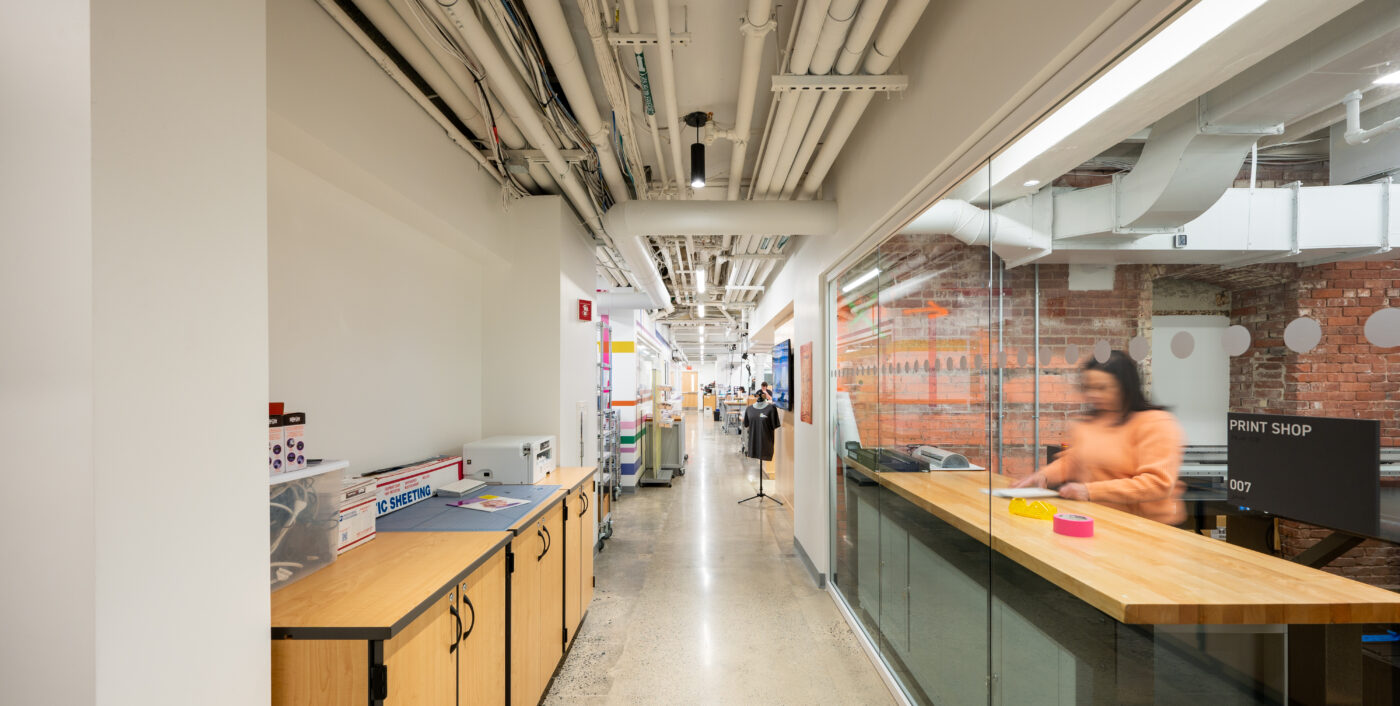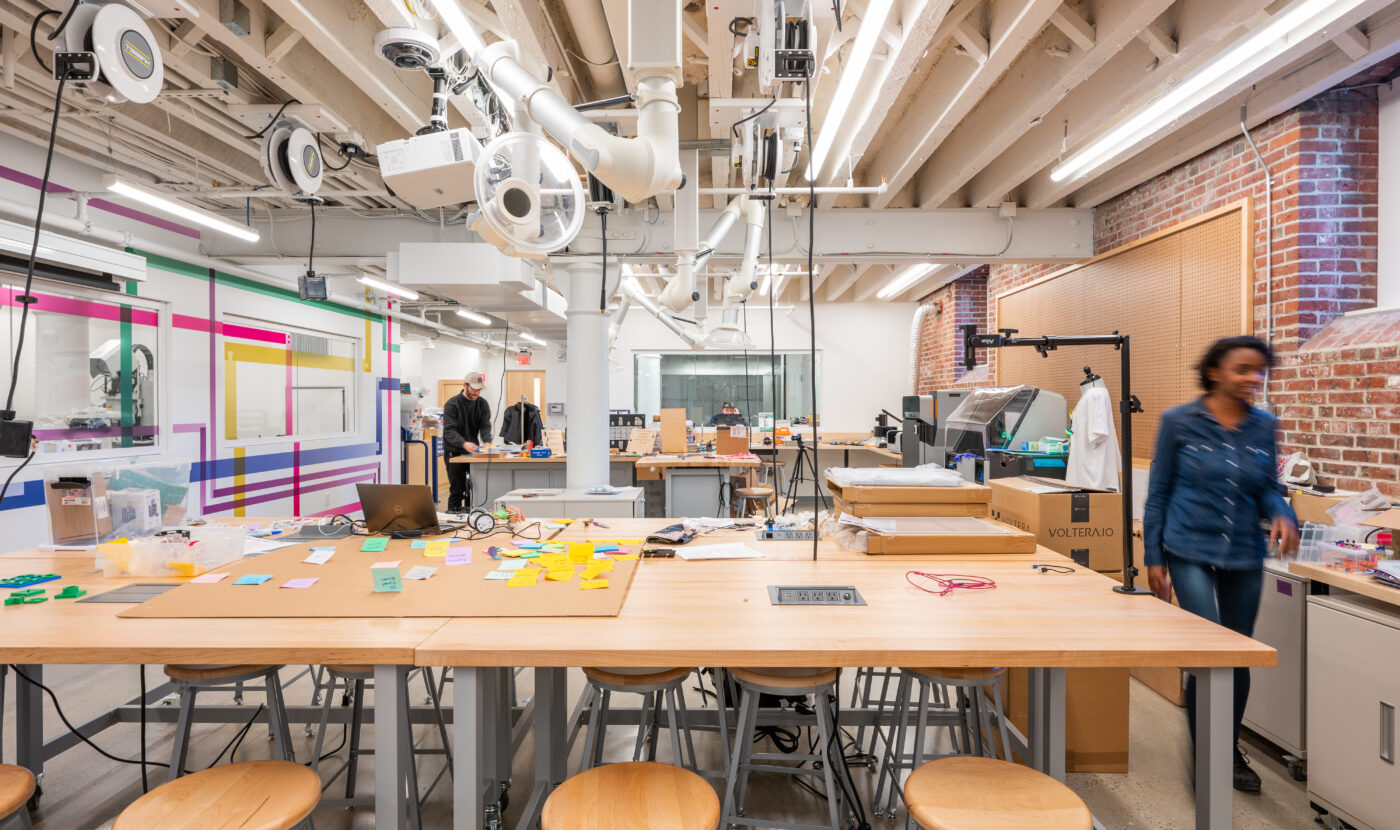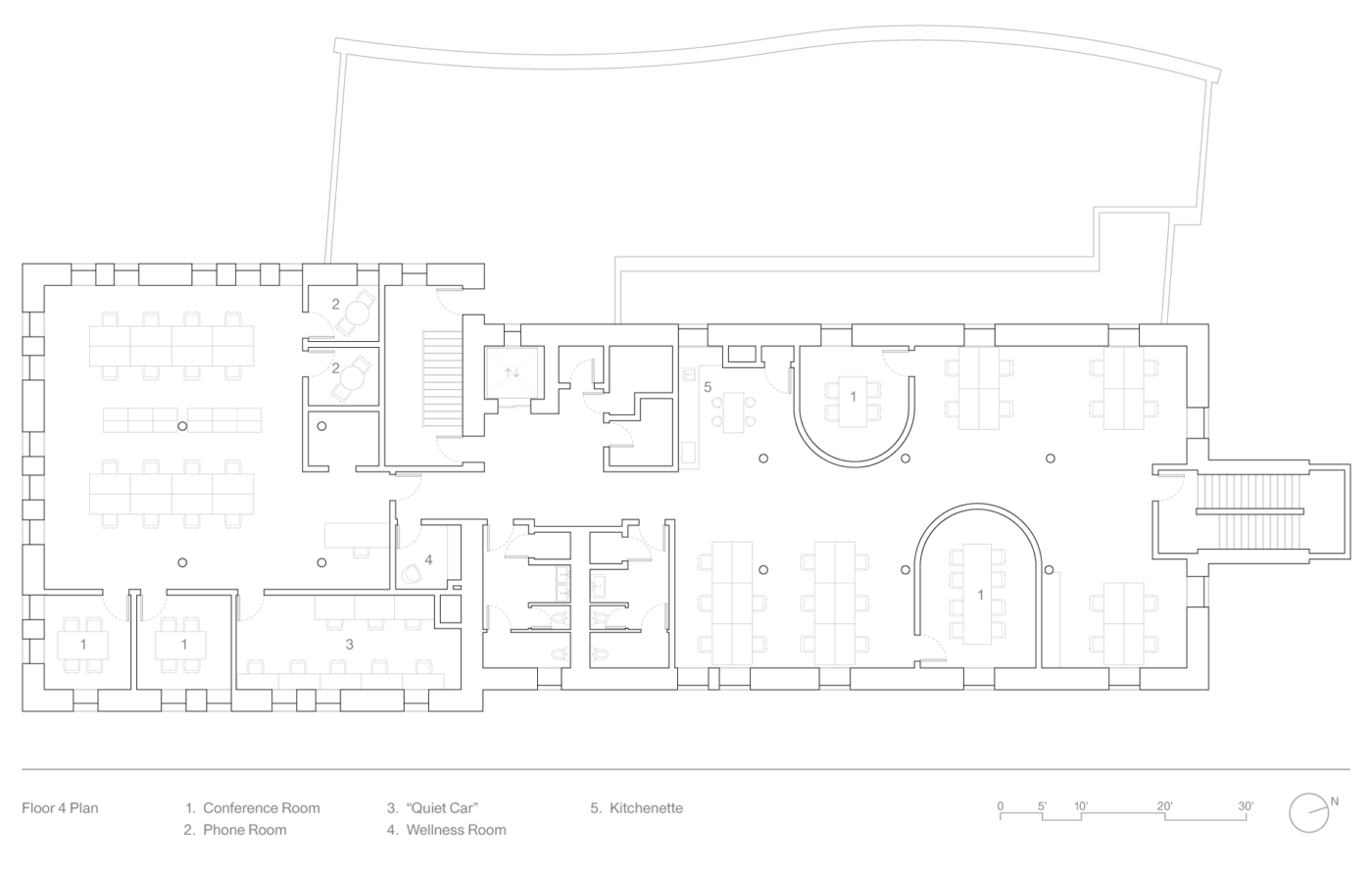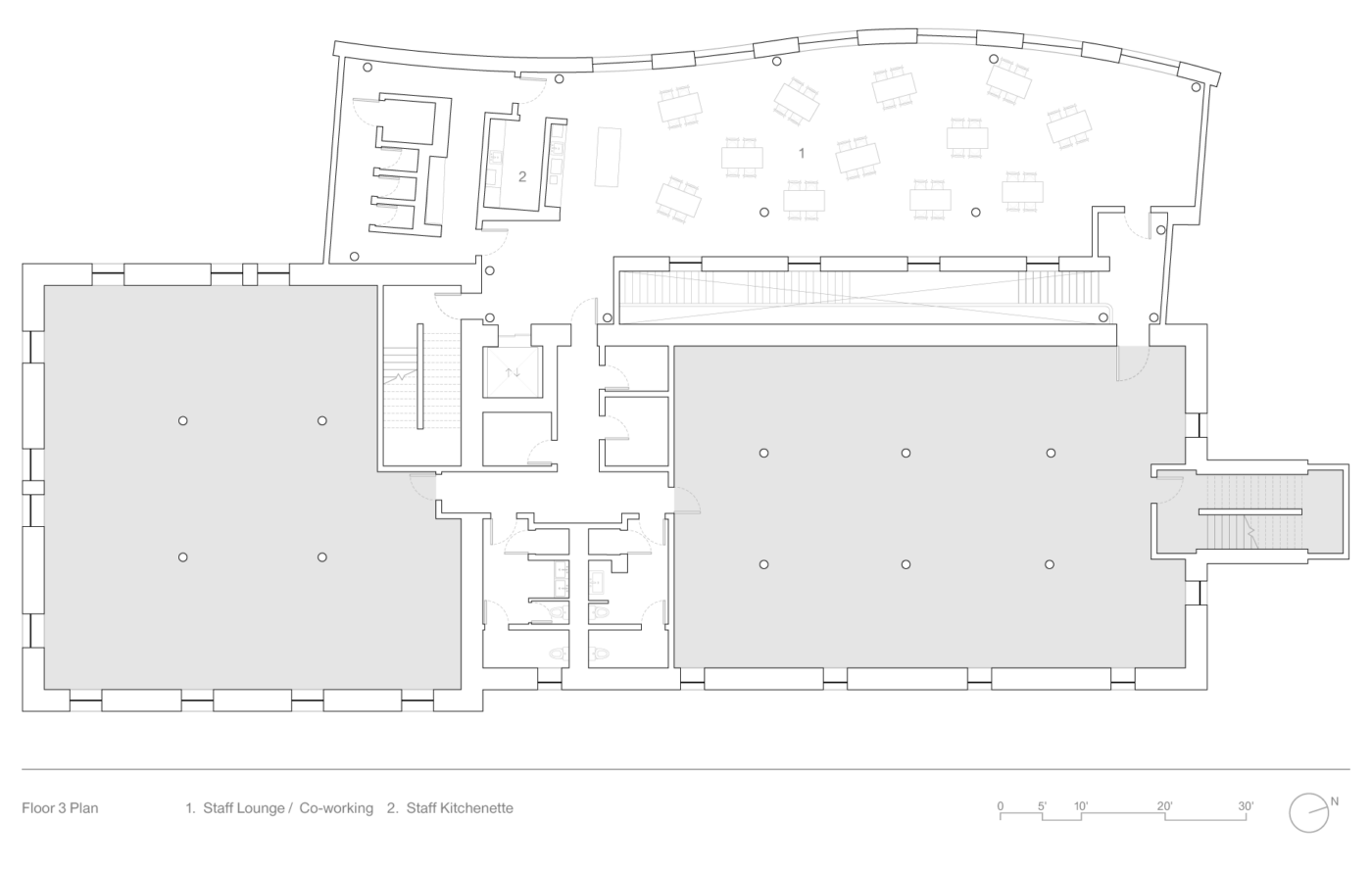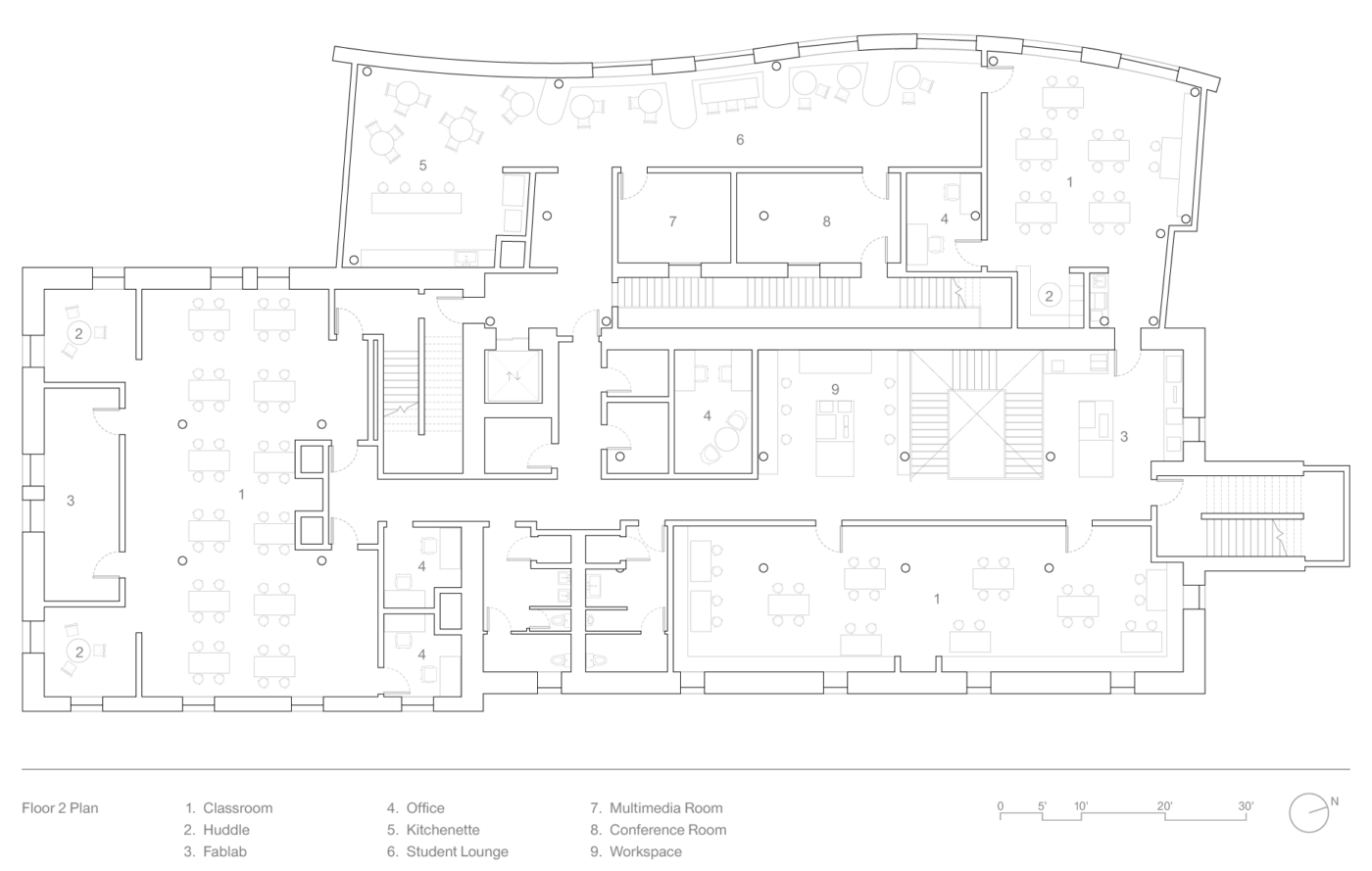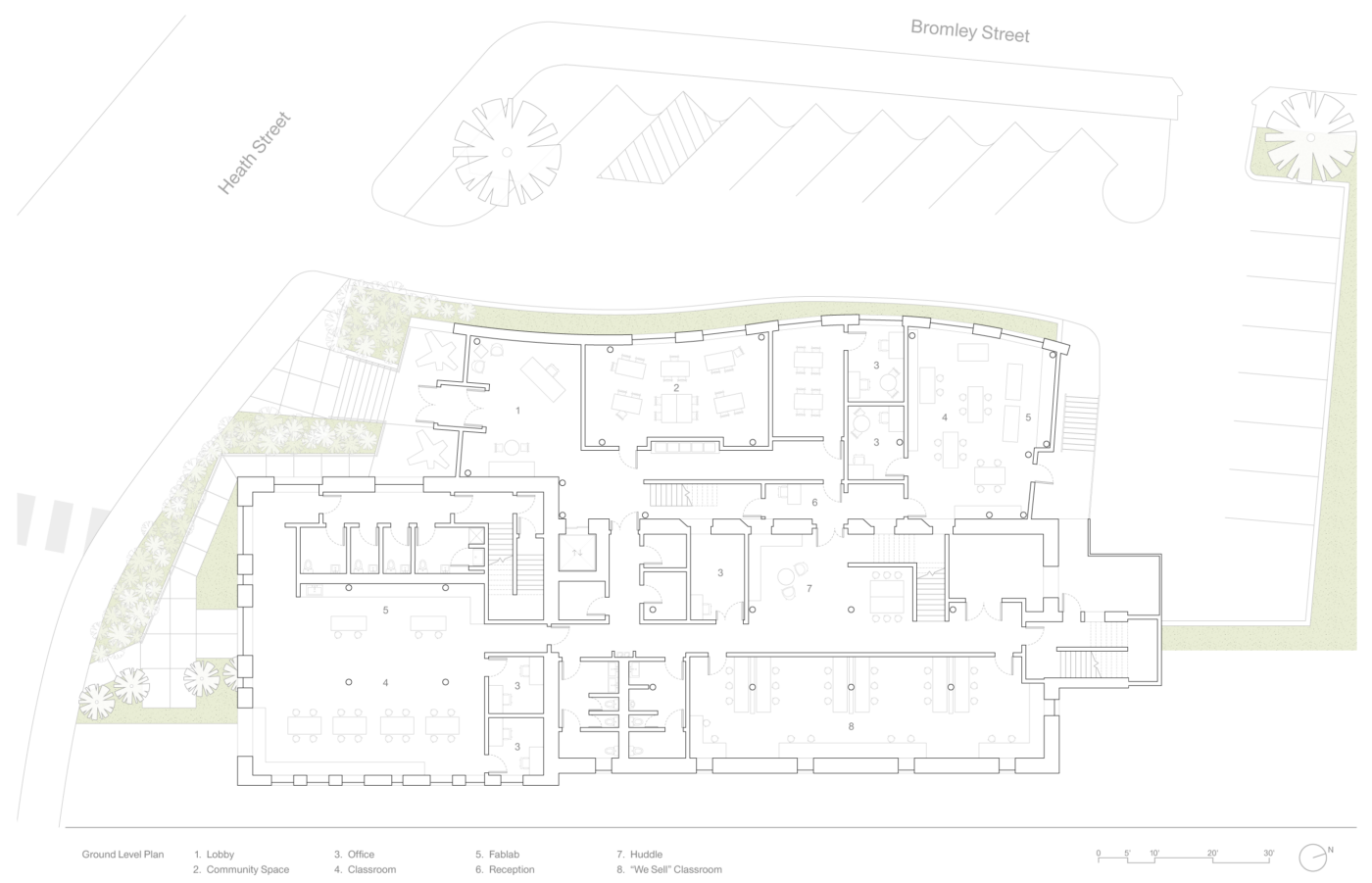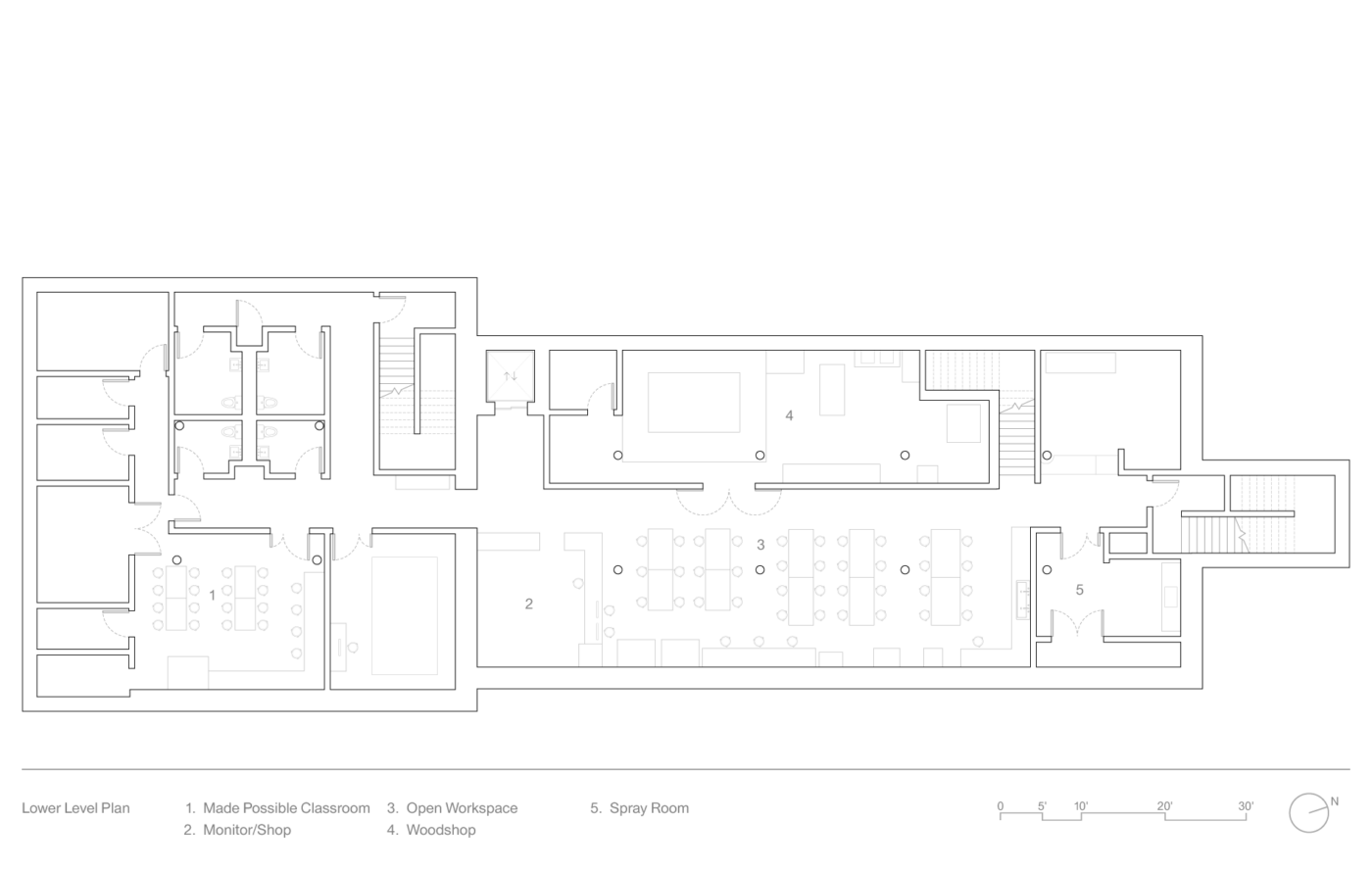The Possible Zone
Utile worked with The Possible Zone (TPZ), to transform a 36,000 SF building into their Innovation Center. At the entrepreneurship/work-based learning program for Boston high school students, teens develop social-emotional learning and technical skills, professional identities, and networks needed for future success. TPZ envisions this building as a hub where students, entrepreneurs, and local businesses can ideate and prototype on site.
The existing building comprised two connected but spatially separate parts: an 1890s masonry, timber, and iron structure, built as a brewery, and a 1990s steel and concrete addition. Post-renovation, these parts house seven teaching studios with integral makerlabs, a large makerspace with state-of-the-art equipment, staff and community workspaces, and flexible assembly space for programming, community meetings, and larger functions.
The design uncovers the original building’s structural and material logics while also breaking down the separation inherent in this two-part building to create visible, open, and welcoming spaces where diverse users commingle and collaborate. The design uses two internal stairs (one new and one retrofitted), large flexible partitions and openings, and material continuities to create visual connection between users and programs.
Building systems were considered in conversation with design aspirations. Indoor air quality was a top priority, informing the design for a new, efficient water source heat pump system (with MERV-13 filters throughout) and energy recovery ventilation, including all new rooftop equipment. Additionally, TPZ’s operations required a new loading dock, a new entry curtain wall retrofit, accessibility upgrades to the site, and a below-grade stormwater management system.
Photography by Chuck Choi.
